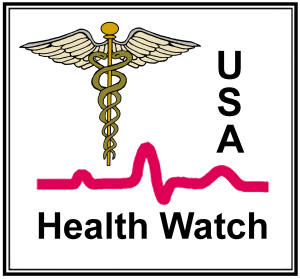

Dr. William Schaffner
discusses the importance of patient and public communications. Health
Watch USA(sm) 2025 Webinar: Combating Infectious Disease Challenges.
Aug. 29, 2025.
Summary: Building Trust and Empathy in Health Conversations
Dealing with vaccine hesitancy, such as a patient’s reluctance to
receive a flu shot, requires more than simply offering facts—it
necessitates empathy, validation, and a focus on building trust. When a
patient expresses uncertainty about vaccination, the healthcare
provider’s response should never be surprised or judgment. Instead, it
is vital to acknowledge and validate the patient’s concerns, maintaining
open, supportive dialogue. Asking patients to share their specific
worries and responding with understanding helps ease anxiety and fosters
a sense of partnership.
Providers are encouraged to normalize healthy behaviors by sharing
relatable examples, such as mentioning that they and their families are
vaccinated, and highlighting that most people in the community do the
same. This approach leverages social norms and comfort to promote
positive health actions. Even if a patient remains hesitant, it’s
important not to argue, but to accept their reluctance and assure them
the conversation will continue in the future.
Effective communication about vaccines also involves keeping messages
clear, fact-based, and accessible. Healthcare professionals should be
honest about the benefits and limitations of vaccines, offering
reassurance and emphasizing the goal of preventing serious disease.
Ultimately, how patients feel during these interactions—respected,
understood, and cared for—has a lasting impact. The role of the
healthcare provider is not only to impart knowledge but to nourish
trust, serving as both teacher and caregiver in the journey toward
better health outcomes. (AI Assisted)
Key Points (AI Assisted)
• Effective communication in public health dates back centuries, with
early examples including the spread of new medical ideas through
newspapers.
• The media, including social media, serves as a primary source of
continued public education after formal schooling.
• Misinformation is unintentionally false or misleading information,
while disinformation is deliberately spread to deceive or cause
harm—often motivated by profit or politics.
• Disinformation is designed to provoke strong emotions such as anger,
distrust, or tribalism to sway beliefs and behaviors.
• Exposure to false claims does not always translate to belief in them,
but social media's influence is significant in shaping public trust.
• Changing health behaviors relies on both imparting knowledge (the
facts) and addressing attitudes (how people feel), with social norms
playing a crucial role.
• Building trust is essential; making patients and the public feel
comfortable and reassured encourages positive health actions.
• When patients express hesitancy, healthcare providers should validate
concerns, maintain a supportive tone, and avoid confrontation, focusing
instead on empathy and normalization.
• Providing relatable examples and affirming shared practices (like
getting vaccinated personally) can help normalize healthy behaviors.
• Always keep communication science-based, simple, clear, and
acknowledge limitations of medical interventions.
• Repeating positive, evidence-based messages and fostering a supportive
environment helps reinforce health recommendations.
• Ultimately, the roles of doctor and nurse encompass teaching and
nourishing, with the greatest care being the prevention of disease.
YouTube Video: https://youtu.be/h45wnmG79xI
Health Watch USAsm Webinar, Combating Infectious Disease
Challenges. Have we gone twenty steps forward or backwards? Aug.
29, 2025
Download Slides
Presentations from additional countries can be viewed at:
https://www.healthwatchusa.org/conference2025/index.html
All information contained on this website is the express opinion
of the presentor and not necessarily that of
Health Watch USA Inc. a Kentucky Non-Profit Organization
The Video Above is a Health Watch USAsm Video.
Health Watch USA is a non-profit 501-C3 Organization based in Kentucky